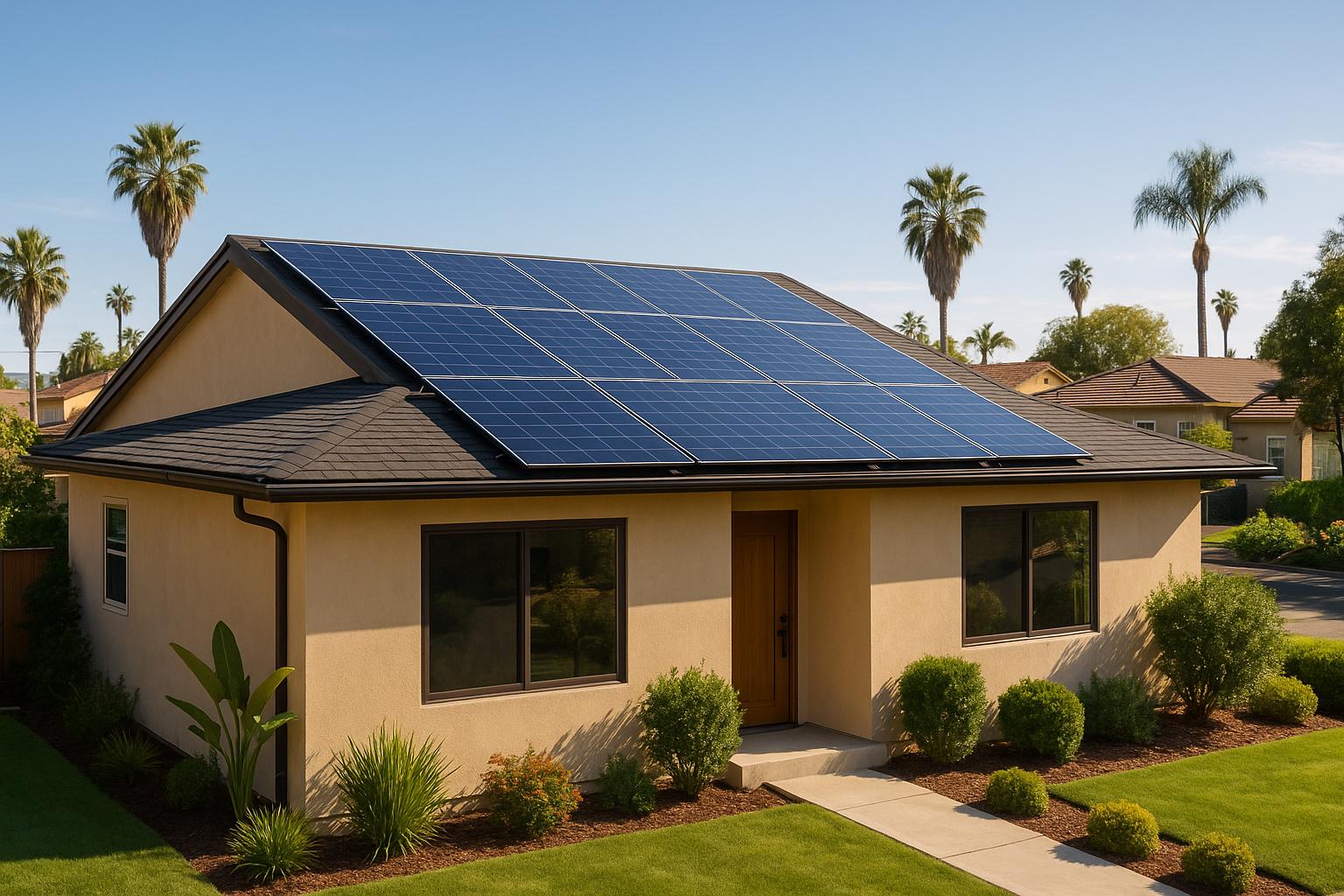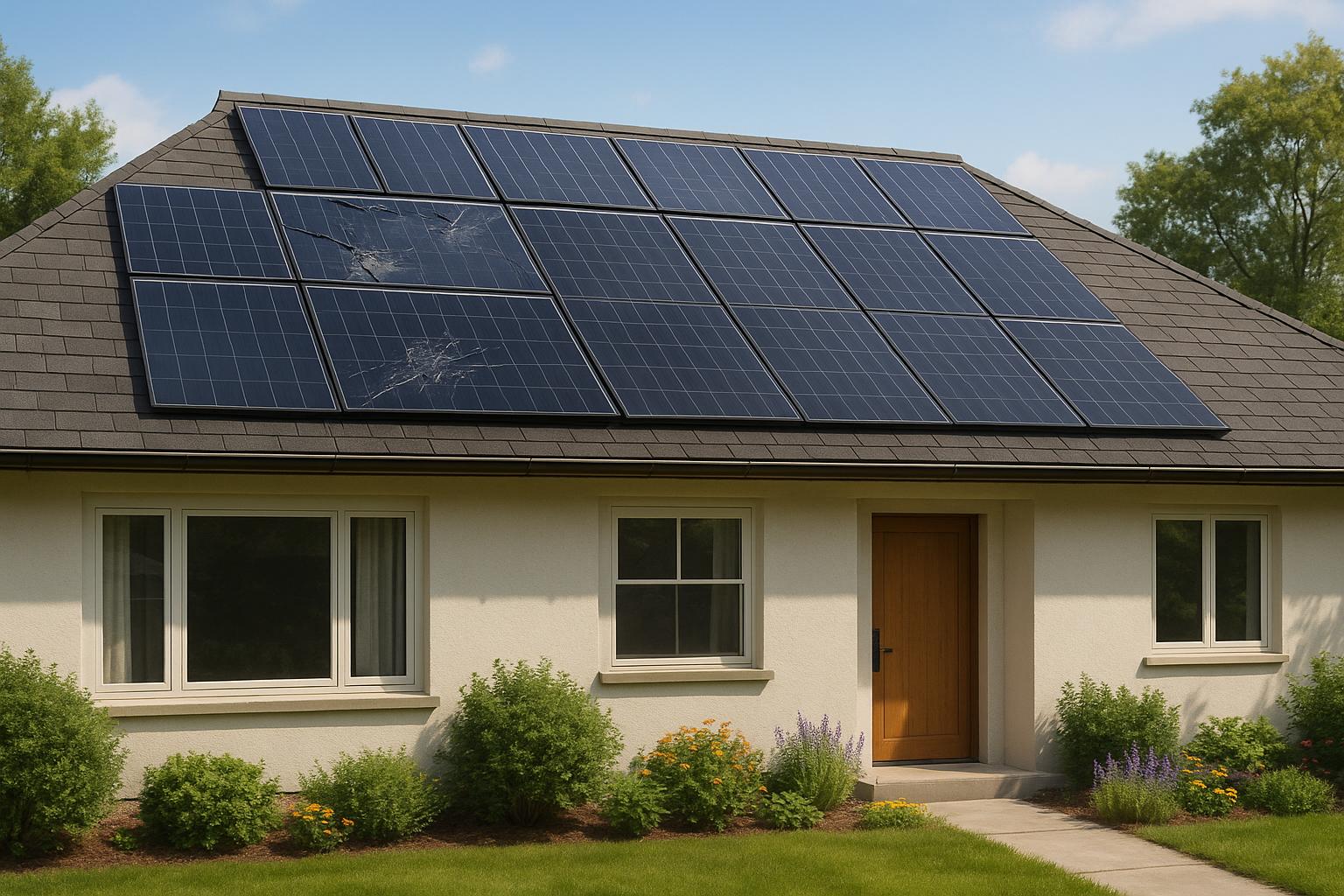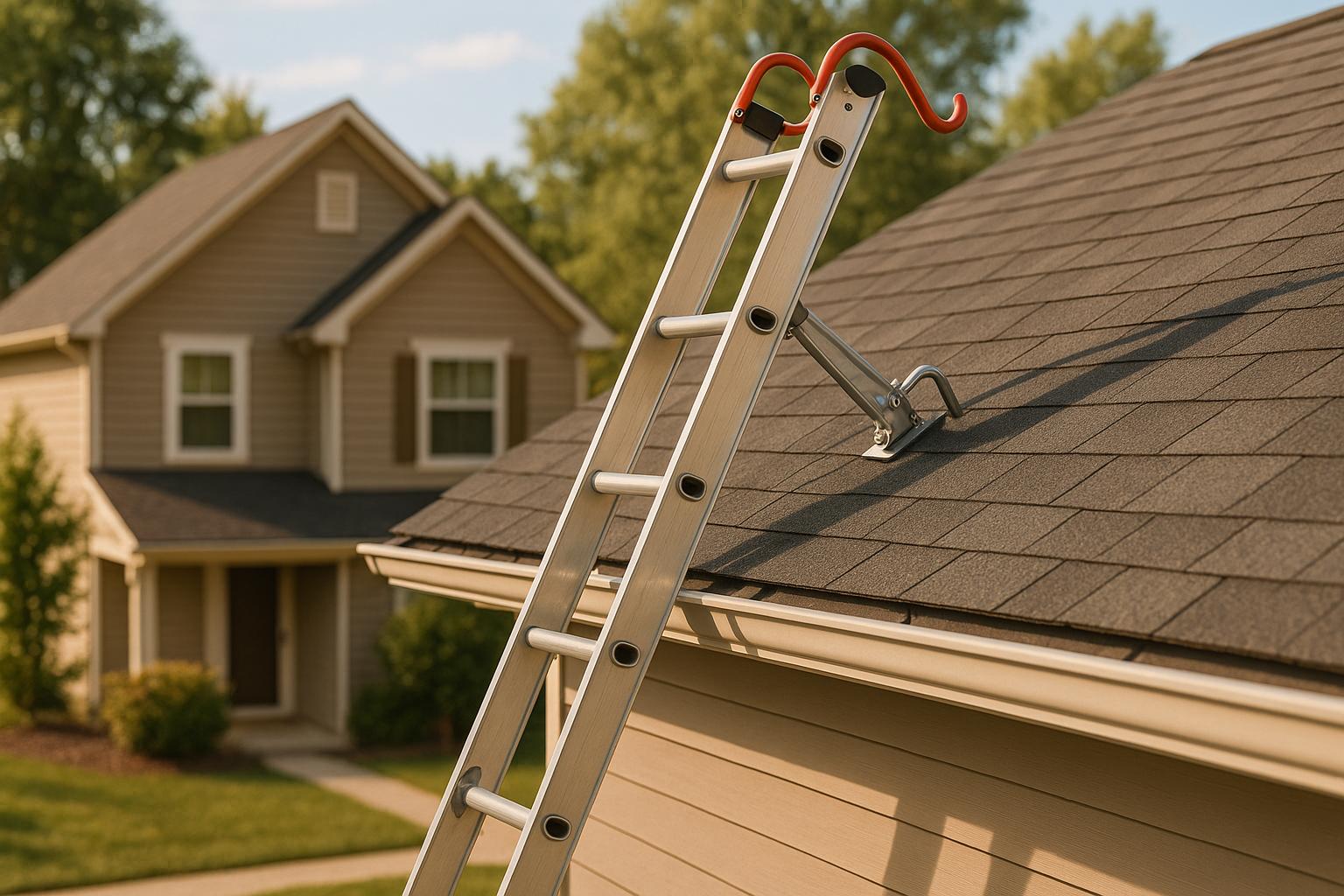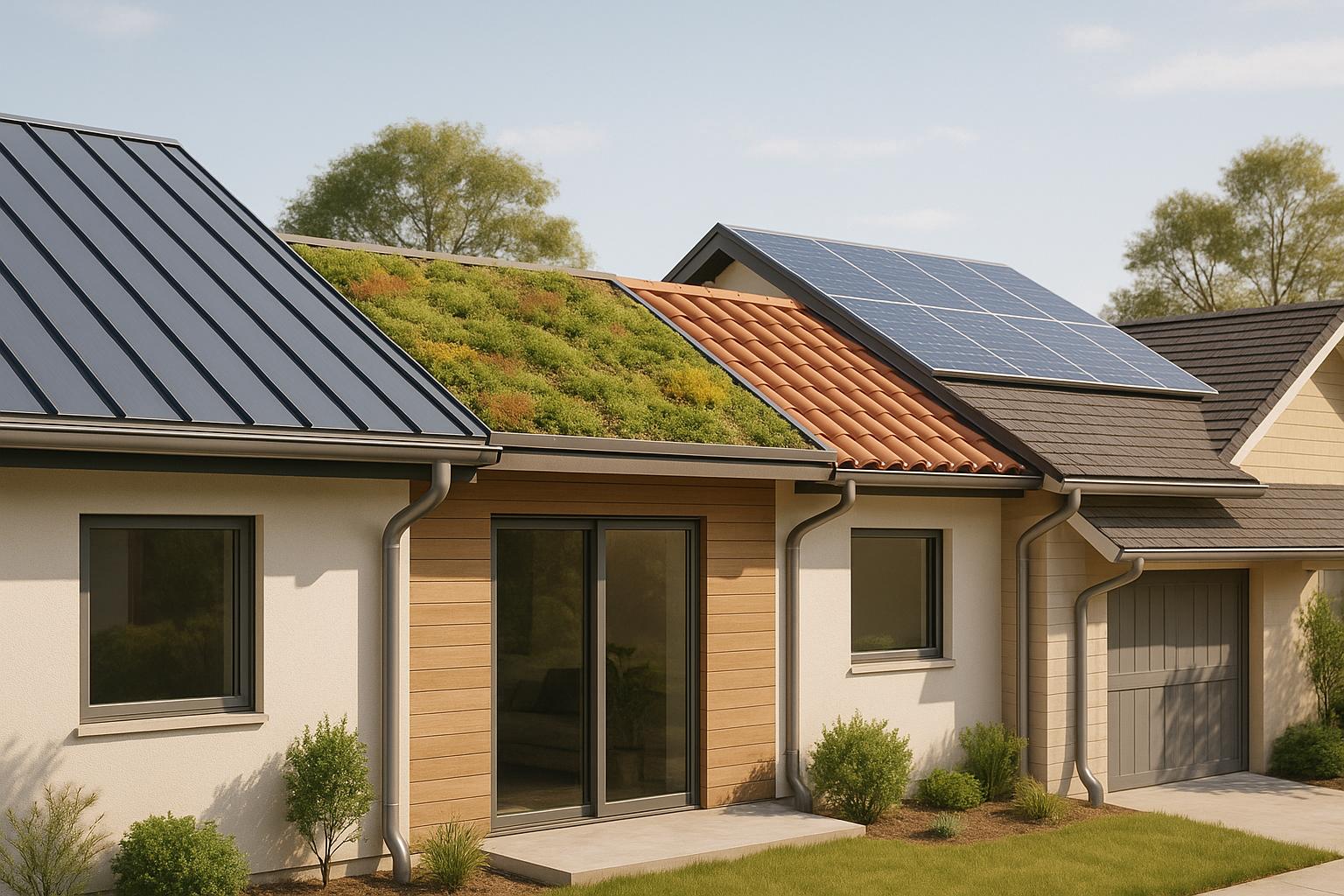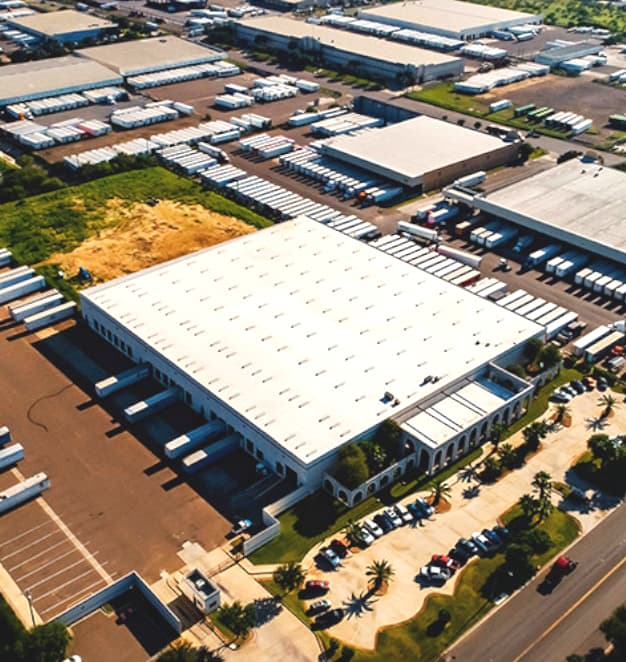- Asphalt Shingle Roofs: Affordable and easy to install but last 15–30 years. Ensure your roof has enough life left before adding panels.
- Metal Standing Seam Roofs: Highly durable (40–70+ years), easy to install, and energy-efficient. Panels can be clamped without drilling.
- Tile Roofs (Clay or Concrete): Long-lasting (50–100 years) and great for insulation but require skilled installation to avoid damage.
- Flat Roofs: Flexible panel placement allows maximum sunlight capture. Ensure proper drainage and structural integrity.
- Tar and Gravel Roofs: Cost-effective and durable (20–30 years) but need weight-based mounts and careful installation.
Quick Comparison
| Roof Type | Durability | Installation Ease | Lifespan | Energy Efficiency | Cost Range |
|---|---|---|---|---|---|
| Asphalt Shingles | Good | Easy | 15–30 years | Good | $2.50–$3.45/watt |
| Metal Standing Seam | Excellent | Very Easy | 40–70+ years | Excellent | Higher upfront cost |
| Tile (Clay/Concrete) | Very Good | Moderate | 50–100 years | Good | Higher labor cost |
| Flat Roofs | Good | Moderate | 20–30 years | Great | Additional rack cost |
| Tar and Gravel Roofs | Good | Moderate | 20–30 years | Good | Moderate |
Key Takeaway:
Choose a roof type with a lifespan matching or exceeding your solar panels (25–35 years). For expert guidance, professional inspections, and installations, consult trusted roofing specialists in LA.
Best Roof For Solar | Best Roof Direction For Solar Panels | Roof Requirements For Solar Panels 2022
What Makes a Roof Good for Solar Panels
When it comes to solar panels, your roof plays a massive role in determining how much energy you can generate. Let’s break down the key factors that can make or break your solar investment.
Roof Direction: South is Your Best Friend
In Los Angeles – and really, throughout the Northern Hemisphere – south-facing roofs are the gold standard for solar panels. Why? They get the most direct sunlight throughout the day, which means more energy production.
"South is the best direction for solar panels to face in California. South-facing panels perform better for homeowners because they can capture more sunlight and generate more electricity." – ENACT
If your roof doesn’t face directly south, don’t worry too much. However, it’s worth noting that deviations from this ideal orientation can cut your panel efficiency by 10–30%.
Interestingly, southwest-facing roofs have their own appeal in California, especially with Time-of-Use billing. These roofs generate the most power during afternoon hours when electricity rates are at their peak. So, while they might produce slightly less energy overall, they can still save you a lot on your electric bill.
"We tell people that a solar panel costs the same amount regardless of what orientation it gets installed in, but the same solar panel facing south will produce more power than a solar panel facing any other direction." – Aaron Nitzkin, executive vice president of solar at Citadel Roofing and Solar in California
Now, it’s not just about which way your roof faces – its slope also matters.
Roof Slope: Finding the Sweet Spot
The angle of your roof, often called the pitch, affects how much sunlight your solar panels can soak up. Ideally, the pitch should fall between 25° and 35°. If you have a flat roof, installers typically add a 5–10° tilt to boost sunlight exposure and prevent debris from building up.
But there’s another important factor to consider: your roof’s strength and durability.
Material Strength and Structural Integrity
A good roof for solar panels isn’t just about orientation and slope – it also needs to be strong enough to support the panels for decades. Solar panels are built to last 25+ years, so your roof needs to hold up just as long. Metal roofs, for instance, can last 40–70 years, while tile roofs can endure 50–100 years.
"The best roof for solar panels is a structurally sound roof that can last for 25 years or more." – Enact Solar
Asphalt shingles and metal roofs are often the top choices for solar installations. Metal roofs, particularly standing seam designs, are incredibly durable and weather-resistant. Tile roofs, made from clay or concrete, can last up to a century, but their brittle nature requires more careful installation.
1. Asphalt Shingle Roofs
Asphalt shingle roofs are the go-to choice for solar panel installations in Los Angeles. Their popularity stems from being the standard roofing material on most California homes, making them a favorite for both homeowners and solar installers.
These shingles work seamlessly with solar systems thanks to a simple mounting process. Installers drill directly into the shingles, securing the mounting equipment with lag bolts and flashing. This setup not only protects against water damage but also provides a sturdy base for solar panels. Let’s break down the key aspects, starting with installation ease.
Installation Complexity
Installing solar panels on asphalt shingles is relatively straightforward. Most California-based solar installers are highly experienced with this roofing type, which means they can handle the process efficiently. This familiarity often leads to quicker installations and could even lower labor costs.
Material Durability
While asphalt shingles may not top the list for durability, they hold up well when in good condition. A general guideline is to ensure the roof is no more than 10 years old before adding solar panels. If your roof is older, it’s wise to get a professional inspection to confirm it can handle another 20–25 years of service alongside your solar system.
Lifespan
The lifespan of asphalt shingles varies based on the type. Three-tab shingles typically last around 20 years, while architectural shingles can reach up to 30 years. On average, they last about 22 years. Since solar panels are designed to last about 25 years, it’s essential to evaluate your roof’s remaining lifespan before installation. If your roof has significantly less life left than your solar panels, replacing it beforehand might save you money and hassle in the long run.
"Given the 25 year lifespan of solar panels and an average 30 year lifespan of an asphalt shingled roof, you’d lose at least 10 years of energy savings by not replacing your roof before installing solar." – Isaksen Solar
Interestingly, solar panels can actually help extend the life of your roof. By shielding it from UV rays and weather damage, they reduce wear and tear over time.
"Solar panels can help extend the lifespan of your roof by blocking UV rays and reducing exposure to heat and the sun. They may also effectively shield your roof from weather damage related to snow, ice, hail, and falling debris." – Roof Maxx Learning Hub
One of the main perks of asphalt shingles is their affordability. Repairs or replacements are less expensive compared to materials like metal or tile. However, they’re not as long-lasting as those premium options, so they may require maintenance or replacement sooner. Keeping your roof in good shape is key for successful solar integration and maximizing energy efficiency.
For homeowners in Los Angeles, asphalt shingles offer an affordable and practical starting point for embracing solar power – especially if your roof is relatively new and in good condition.
2. Metal Standing Seam Roofs
Metal standing seam roofs are a great choice for solar panel installations in Los Angeles. Known for their sleek and modern look, these roofs feature vertical metal panels that have become increasingly popular across Southern California.
One standout feature of these roofs is their unique mounting system. Solar panels can be clamped directly onto the raised seams, which means no drilling into the roof. This not only preserves the roof’s integrity but also significantly reduces the risk of leaks.
Material Durability
Standing seam metal roofs are built to handle California’s sunny skies and unpredictable weather. Their strength and resistance to corrosion make them particularly well-suited for coastal areas like Santa Monica, where salty air can be tough on other materials. Plus, their sturdy design easily supports the weight of solar panels without needing additional reinforcement.
Installation Simplicity
Installing solar panels on these roofs is surprisingly simple. Specialized clamps attach directly to the seams, eliminating the need for any drilling. As EnergySage puts it:
"It’s easy to mount solar panels on a metal roof." – EnergySage
This straightforward process pairs perfectly with the long-lasting nature of these roofs.
Lifespan
Metal standing seam roofs typically last between 40 and 70 years, making them a reliable partner for solar panel systems, which usually have warranties of 25 to 30 years. This means homeowners are unlikely to face the hassle of replacing the roof while their solar system is still operational.
Energy Efficiency
These roofs also contribute to energy savings. Their reflective surfaces can reduce cooling costs by 10–25%, an important factor in sunny Los Angeles. Additionally, with up to 95% recycled content and full recyclability, they align with the eco-friendly goals of solar energy . This combination of efficiency and sustainability makes them an ideal option for solar enthusiasts in the region.
3. Tile Roofs (Clay and Concrete)
Tile roofs are a hallmark of LA’s Mediterranean-inspired architecture and work well with solar panels, but they require careful handling during installation. These roofs shine in LA’s sunny climate, offering natural insulation that helps keep homes cooler during scorching summers while boosting energy savings. Here’s a closer look at their standout features.
Material Durability
Clay and concrete tiles are built to handle tough conditions. When installed correctly, they can endure winds up to 200 MPH and have a moisture absorption rate of less than 1% – a key factor in their resilience. They also boast excellent fire resistance, an essential feature for homes in wildfire-prone areas.
However, keep in mind that concrete tiles are heavy, so it’s crucial to ensure your roof structure can handle the additional weight[35,37].
Installation Complexity
Installing solar panels on tile roofs is more intricate than on asphalt shingles. The process demands specialized techniques to prevent cracking, which makes it more labor-intensive and expensive[39,40]. Methods like the tile replacement approach and the use of protective walkway pads are commonly employed to minimize damage and maintain waterproofing during both installation and future upkeep.
Lifespan
One of the biggest advantages of tile roofs is their durability. Clay tiles can last up to 100 years, while concrete tiles typically offer a lifespan of over 50 years. This longevity often outpaces the 25–30-year warranties of most solar panel systems, making tile roofs a smart choice for long-term investments.
Energy Efficiency
Tile roofs naturally improve your home’s energy efficiency. Their insulation properties help cut down on cooling costs during LA’s hot summers and work well alongside solar panels to maximize energy savings. Clay tiles, in particular, are eco-friendly and provide excellent protection against intense sunlight. Choosing lighter-colored tiles can further enhance sunlight reflection, reducing cooling expenses even more.
sbb-itb-d1d6490
4. Flat Roofs
Flat roofs, like other solar-friendly options, bring unique benefits for maximizing energy output in Los Angeles. They’re especially popular for commercial buildings and modern residential properties. The flexibility of their layout allows installers to position solar panels at the best angles to soak up Southern California’s abundant sunshine.
Installation Complexity
Installing solar panels on flat roofs comes with moderate challenges compared to sloped roofs. One key consideration is ensuring proper drainage to avoid water pooling during heavy rains. Using ballasted, non-penetrative mounts is a smart choice – it preserves the roof’s waterproofing while minimizing installation risks. This approach also makes the process safer for workers, as better footing reduces the chances of falls. Before moving forward, it’s crucial to evaluate the roof’s load capacity, as careful planning is essential for a durable and efficient setup.
Material Durability
With proper upkeep, flat roofs can last for decades, and solar panels add an extra layer of protection by shielding the roof from UV rays and heat damage. However, it’s important to assess the roof’s structural strength, especially when using ballasted mounting systems that rely on heavier materials. Consulting a structural engineer is highly recommended to ensure the roof can handle the added weight.
Energy Efficiency
Flat roofs are ideal for maximizing energy efficiency because they allow for customized panel positioning. Installers can adjust the tilt of the panels to capture the most sunlight throughout the day, unlike sloped roofs, which are limited by their fixed angles. In Los Angeles, rooftop solar has the potential to meet 7,200 gigawatt-hours of on-site building demand, accounting for about 29% of the city’s total electricity consumption. Additionally, bifacial solar panels installed on flat roofs can enhance efficiency by up to 30%, thanks to their ability to absorb light on both sides. The flat layout also makes routine cleaning and maintenance easier, which is a big advantage in LA’s dusty environment. All these factors make flat roofs a strong option for solar installations.
Lifespan
Solar panels on flat roofs typically last 25 to 30 years and can even help extend the roof’s lifespan by reducing exposure to harsh weather conditions. Over time, solar panels experience a gradual performance decline of about 0.5% to 1% per year, but most still produce 75% to 90% of their original energy capacity after 25 years.
For expert flat roof solar installations in Los Angeles, reach out to Prime American Roofing. This trusted local company provides professional assessments and high-quality installations to ensure your flat roof is optimized for solar energy.
5. Tar and Gravel Roofs
Tar and gravel roofs are a cost-effective and durable option, making them a popular choice for solar panel installations in Los Angeles. The gravel layer not only protects the roof but also reflects sunlight, contributing to better energy efficiency.
Installation Complexity
Installing solar panels on tar and gravel roofs comes with unique challenges, requiring experienced professionals who understand these surfaces. Instead of penetrating the roof, weight-based mounting systems are typically used to maintain the roof’s waterproofing. Since these roofs are flat, additional hardware is needed to tilt the panels to an optimal 30° angle for sunlight capture. This can slightly increase installation costs. It’s essential to work with a team that knows how to properly orient the system and confirm that the building’s structure can handle the added weight.
Material Durability
Tar and gravel roofs are built to last, with a lifespan of 20–30 years under normal conditions. In dry climates, they can last up to 35 years, and with exceptional maintenance, they may even reach 40 years. To ensure longevity, regular inspections are necessary. Addressing surface cracks quickly, maintaining proper drainage, and reapplying gravel periodically are key to keeping these roofs in top condition.
Energy Efficiency
The gravel layer plays a dual role by reflecting sunlight, which helps lower cooling costs, and by supporting adjustable solar panel positioning. The flat design allows panels to be angled for maximum sunlight exposure, boosting energy production.
Lifespan Considerations
Both tar and gravel roofs and solar panels are designed to last 20 to 30 years, making it easier for property owners to align replacement schedules. Consistent maintenance is vital to ensure peak performance. This includes bi-annual inspections – ideally in spring and fall – quick repairs, proper drainage management, and periodic gravel reapplication. Additionally, solar panels can help protect the roof by reducing UV exposure to its membrane, potentially extending its life.
For property owners in Los Angeles, Prime American Roofing offers specialized services for tar and gravel roofs. Their team provides expert assessments and solar panel installations, ensuring your roof remains structurally sound while maximizing energy efficiency. With their expertise, integrating solar panels onto tar and gravel roofs becomes a seamless process.
Roof Type Comparison Chart
Choosing the right roof type for solar panels in Los Angeles can make a big difference in durability, ease of installation, and long-term value. Here’s a quick side-by-side look at the most common options:
| Roof Type | Material Strength | Installation Difficulty | Lifespan | Cost Range | Energy Performance |
|---|---|---|---|---|---|
| Asphalt Shingle | Good | Easy | 15–25 years | $2.50–$3.45/watt | Good – widely used and reliable |
| Metal Standing Seam | Excellent | Very Easy | 40–70+ years | Higher upfront cost | Excellent – keeps panels cooler |
| Tile (Clay/Concrete) | Very Good | Moderate | 50+ years | Higher due to skilled installation | Good – requires experienced installers |
| Flat Roof | Good | Moderate | 20–30 years | Additional rack costs | Great with tilted racks for efficiency |
This chart highlights the strengths of each roofing option. Metal roofs stand out for their durability and ability to keep panels cooler, offering excellent energy performance over a lifespan of 40–70+ years.
"The best roof for solar panels is a structurally sound roof that can last for 25 years or more." – Enact Solar
Tile roofs are another strong contender, known for their longevity of 50+ years. However, they require specialized installation, and not all solar installers are equipped to handle this material, which may limit your choices.
Flat roofs, often seen on commercial or modern residential buildings, allow for flexible panel placement. While they need additional mounting hardware to adjust panel angles, this setup ensures maximum energy capture.
Energy performance is especially critical in Los Angeles, where the climate can push roof temperatures sky-high. For example, increasing a roof’s Solar Reflectance Index (SRI) from 25 to 40 can drop surface temperatures by over 13°F, translating to potential energy savings of 15–20% on cooling bills. Metal roofs, with their natural reflectivity, excel in this regard, boosting both roof and solar efficiency.
Cost is another key factor. Installation complexity plays a big role in the overall investment. Asphalt shingles are the easiest and most affordable to work with, while tile and flat roofs demand specialized skills, increasing labor costs. That said, the extended lifespan of premium materials like metal and tile often balances out the higher upfront expense over time.
Prime American Roofing brings years of expertise across these roofing types, offering personalized advice to match your solar goals and property needs in Los Angeles. With this information, you’re better equipped to choose a roof that supports your solar ambitions and stands the test of time.
Preparing Your Existing Roof for Solar Panels
Before installing solar panels, it’s crucial to make sure your roof is in excellent condition and structurally capable of handling the added weight – typically 2 to 4 pounds per square foot – for the next 25+ years.
Roof materials have different lifespans: asphalt roofs last around 20–30 years, metal roofs can go for 35–70 years, and tile roofs may endure 50–100 years. If your roof is nearing the end of its life, replacing it before solar installation is a smart move. This ensures your roof is ready to support the panels and avoids costly rework down the line.
"Installing a PV system on a commercial roof without checking its structural integrity is like packing a rucksack for a mountain trek without knowing if the straps will hold."
– Chris Penman, Author at LinkedIn
There are clear warning signs that your roof might need attention. Look out for missing, cracked, or curling shingles, water stains, granule loss, or rust. Sagging or uneven rooflines are red flags for structural issues, which could worsen under the weight of solar panels. Additionally, roofs with multiple layers of shingles may already be overloaded and require extra evaluation.
Older roofs, in particular, need a thorough review since they weren’t designed with modern solar loads in mind. A professional inspection can determine if your roof is up to the task. This includes checking the condition of the roof’s materials, slope, and the support structure beneath – like beams and decking.
If your roof does need replacing, doing it alongside solar panel installation is both practical and cost-effective. It simplifies the construction process and ensures your investment is protected from the elements, especially under Los Angeles’s intense sunlight and occasional storms. Plus, combining the two projects can increase your home’s value by about $15,000.
Each year, about 2.3 million single-family homes are expected to require roof replacements, making this a common scenario for homeowners. Working with experienced professionals, like Prime American Roofing, ensures your roof is thoroughly inspected and prepared. Their process includes ventilation checks and structural assessments, as improper preparation can lead to significant risks like leaks during solar installation.
"Installing solar panels is a long-term investment, and proper installation is key to maximizing energy savings and protecting your warranty. A poorly installed system can lead to roof damage, inefficiencies, and costly repairs down the line."
– American Roofing Solar
Prime American Roofing offers free roof inspections to assess whether your roof can handle solar panels. Their detailed evaluations cover everything from ventilation systems to structural integrity, ensuring vents aren’t blocked and potential issues like water damage or inadequate flashing are addressed. This level of care helps prevent future problems and ensures your solar system performs efficiently for years to come.
A professional inspection doesn’t just focus on surface materials – it digs deep into the underlying structure. Experts can spot hidden issues that homeowners might miss, such as subtle water damage, compromised flashing, or ventilation problems. Addressing these concerns upfront is essential for a reliable and long-lasting solar setup.
Conclusion
Picking the best roof type for solar panels in Los Angeles means creating a reliable setup that works efficiently for decades. For instance, metal roofs not only last 40 to 70+ years but also pair seamlessly with solar panels. Asphalt shingles, on the other hand, offer an affordable and easy-to-install option. If properly maintained, clay and concrete tiles can endure for 50 to 100+ years, while flat roofs provide flexible installation options suited to many LA homes.
It’s important to choose a roof with a lifespan that matches or surpasses the 25–35 years of your solar panels. Features like reducing cooling costs by up to 40% can also add significant value to your investment.
"The best roof for solar panels is a structurally sound roof that can last for 25 years or more." – Enact Solar
These roofing options lay the groundwork for a secure and long-lasting solar energy system. Professional installers can evaluate the structural integrity of your roof, recommend the best installation methods, and manage permits. Companies like Prime American Roofing even offer free inspections to ensure your roof is ready for solar panels.
The benefits are clear. Solar panels can increase your home’s value by an average of $15,000 and, when paired with the right roof, provide consistent energy savings over time. Whether your roof needs replacing or is already in good condition, choosing based on its current state and LA’s climate ensures that your roof and solar panels will perform well together for years to come.
FAQs
How can I tell if my roof is strong enough to support solar panels for the next 25 years?
Before committing to solar panels, it’s crucial to ensure your roof is ready to handle them for the next 25 years. Start with a professional roof inspection to identify any signs of wear or damage, such as cracks, missing shingles, or sagging areas. This evaluation should also factor in whether your roof can support the extra weight of solar panels, as well as external conditions like wind, seismic activity, or snow loads.
It’s a smart move to consult a roofing expert or structural engineer. They can thoroughly assess your roof’s condition, verify it meets safety standards, and confirm it’s durable enough for a long-term solar setup. Spending on this evaluation now can save you from unexpected repair or replacement costs down the road.
Why is a metal standing seam roof a great choice for installing solar panels in Los Angeles?
A metal standing seam roof is a smart option for installing solar panels in Los Angeles, thanks to its long-lasting durability, energy-saving benefits, and straightforward installation process. These roofs resist corrosion exceptionally well and can endure for decades, making them a solid, long-term investment. Plus, their reflective surface helps reduce heat absorption, which can keep your home cooler and might even lower energy bills in LA’s warm weather.
What’s more, solar panels can be mounted directly onto the seams without the need to drill into the roof. This not only protects the roof’s structure from damage but also prevents leaks. The result? A quicker, more secure installation process that keeps your roof intact while embracing clean energy solutions.
Why do the orientation and slope of my roof matter for solar panel efficiency?
The direction your roof faces and its slope are crucial factors in how effectively solar panels can generate energy. In Los Angeles, roofs facing south tend to receive the most sunlight throughout the day, which can lead to a noticeable increase in energy production. As for the slope, having a tilt angle that aligns closely with your location’s latitude – typically between 15 and 40 degrees – can significantly enhance sunlight exposure, improving overall efficiency.
To make the most of your solar panel system, it’s essential to ensure your roof’s orientation and angle are optimized for sunlight absorption. If you’re thinking about installing solar panels, reaching out to professionals can help you determine the best configuration for your roof.

